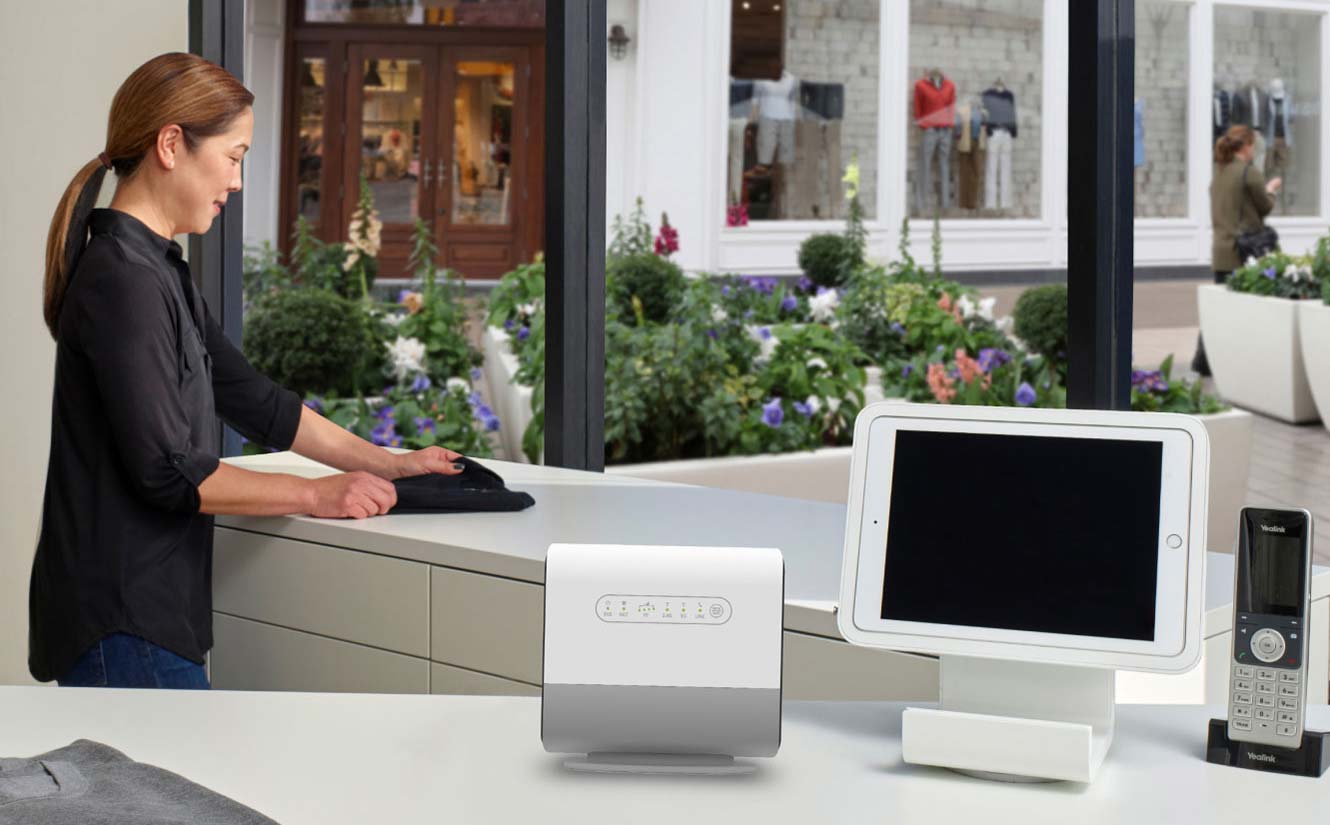What are telephone country codes and how do they work?

Country music star Reba McEntire spelled out exactly how telephone service worked circa 1994 in “Why Haven’t I Heard from You?”: “Baby you can dial direct/I got call forwarding and call waiting/You can even call collect/I’m sure the operator will be glad to put you through/So dial zero for assistance if this all confuses you.”
But a lot has changed in the last 30 years. Even the term “dial” is anachronistic in the tap and swipe era. Once upon a communication network, dialing referred to the way rotary telephones worked. You dialed a local call, and dialed 411 to have a live operator look up a number, or to connect long-distance.
As telephone usage soared, needing operators for long-distance calls became increasingly cumbersome. So Ma Bell created area codes, which automated call switching and eliminated the need for operators within a country.
Calling internationally is a whole different ballgame, however, and requires a telephone country code. Because with an intercontinental call, you’re literally hitting it out of the park. Ready to get up to bat?
What are country codes?
While U.S. area codes have become integral to our lives to such an extent that they’re often perceived as part of our identity (“612? Those Twins are having some season, Minneapolis!”), country codes are not nearly as ingrained in our collective consciousness.
Telephone country codes are prefixes that enable international direct calling—like digital passports for virtual visits. They require an international call prefix, which exits a caller from their own national numbering system and places them into the international one. Thus, all international country codes consist of one to three digits.
The actual number you’re calling might not have seven digits as we’re accustomed to stateside, either. The full number could contain more or fewer digits, depending on the location. So to book your reservation at a five-star-rated hotel in Ibiza, you’ll call 011-34-871-556888. You’re welcome.
How telephone country codes came to be
In the late 1960s, Lily Tomlin was amusing audiences with the fictitious Ernestine’s grating voice as a telephone operator on Rowan and Martin’s Laugh-In. At the same time, the International Telecommunication Union (ITU)—the United Nations agency that coordinates global telecommunications—proposed a system that divided the world into nine zones to help make international calling easier and better organized.
It was challenging to maintain the system over time, however, as the world map kept changing, and with it the country telephone codes. For example:
- In 1984, North Korea received new code 850, while South Korea kept the original 82.
- With Germany’s reunification in 1990, the single country code became 49; the East German code 37 was then defunct.
- Yugoslavia code 38 vanished in 1993, with Serbia and Montenegro becoming 381, Croatia 385, Slovenia 386, Bosnia 387 and Macedonia 389.
This is a small sampling of our ongoing geopolitical shifts, which create seismic shock waves in telephone country codes.
Big decision: How were telephone country codes determined?
Telephone country codes evolved based on a system of mechanical telephone exchanges, so it was convenient for the ITU to split the world into broad areas: 1 for North America, 2 for Africa, 3 and 4 for Europe, etc. These were then further divided according to the capacity of each network, like 33 for France, and further still for smaller countries, like 353 for Ireland. Using such a method ensured that no number was longer than 11 digits, which helped minimize public confusion. There’s a little more to the backstory, however.
Because country codes were established when rotary phones were the norm, that device influenced the result. A “1” is the first digit on a rotary phone, so it takes much less time to dial than a “9.”
Therefore, the most influential countries in the ITU—along with those having the largest population—received the shortest, simplest country codes. The U.S. and Canada, with well-developed communication networks and good global access, scored the prime code—1.
Certain influential European countries received memorable double-digit codes (England is 44) while smaller countries received longer codes (354 for Iceland).
Even the least populated parts of the world have country calling codes. So if you absolutely must reach your intrepid explorer nephew on his mission to Antarctica, use country code 672. He may be a little too busy to pick up, though.
Making an international call from the U.S.
With this framework in place, making an international call is easy. The procedure depends on the type of phone you’re using.
From a landline, simply dial the exit prefix, followed by the country code, and the city code. For example, to reach someone in Stockholm, you’d dial 011 (the U.S. exit prefix), 46 (Sweden’s country code), 8 (Stockholm’s city code), then the local phone number.
If you’re using a mobile phone, be sure to check into international calling plans so you receive the best rate. If you attempt to make an international call with a domestic-only plan, it could end up being very expensive.
On an iPhone, you can enable the Dial Assist feature, which attempts to automatically add the international and local prefixes when you’re making a call that requires them. But just as autocorrect can be useful yet sometimes wrong, you may find this digital support isn’t providing the precise digits you need.
VoIP calling might be a simpler and more affordable option than either a landline or mobile service provider because you can make an international telephone call via computer with just your microphone headset and high-speed internet connection.
Regardless of the method you choose, be sure to familiarize yourself with the fees and any terms and conditions prior to making the call, so there are no unpleasant surprises on your next bill.
Calling the U.S. from abroad
If you want to call home from your visit to Ibiza, Spain, it’s simple: just dial Spain’s international exit prefix, followed by a 1 for the United States, then the area code and phone number. That looks like 00-1-area code-XXX-XXXX. That’s from a landline.
Of course, if you already have a U.S. mobile phone number and are calling a U.S. number while abroad, you may be able to treat it like a local number and skip entering a country code by using Wi-Fi calling. Contact your carrier to make sure you have a Wi-Fi calling enabled smartphone and turn it on before traveling.
Your mother will be so pleased you thought of her while at that five-star Ibiza resort.
The world’s telephone country codes, subject to change
In alphabetical order, here are the current telephone country codes, which may change due to political remapping and digital innovation:
| Country | Country code | Exit prefix |
| Afghanistan | 93 | 0 |
| Albania | 355 | 0 |
| Algeria | 213 | 0 |
| American Samoa | 1 | 11 |
| Andorra | 376 | 0 |
| Angola | 244 | 0 |
| Anguilla | 1 | 11 |
| Antigua and Barbuda | 1 | 11 |
| Argentina | 54 | 0 |
| Armenia | 374 | 0 |
| Aruba | 297 | 0 |
| Ascension | 247 | 0 |
| Australia | 61 | 11 |
| Austria | 43 | 0 |
| Azerbaijan | 994 | 0 |
| Bahamas | 1 | 11 |
| Bahrain | 973 | 0 |
| Bangladesh | 880 | 0 |
| Barbados | 1 | 11 |
| Belarus | 375 | 8-wait for dial tone-10 |
| Belgium | 32 | 0 |
| Belize | 501 | 0 |
| Benin | 229 | 0 |
| Bermuda | 1 | 11 |
| Bhutan | 975 | 0 |
| Bolivia | 591 | 0 |
| Bosnia and Herzegovina | 387 | 0 |
| Botswana | 267 | 0 |
| Brazil | 55 | varies* |
| British Virgin Islands | 1 | 11 |
| Brunei | 673 | 0 |
| Bulgaria | 359 | 0 |
| Burkina Faso | 226 | 0 |
| Burundi | 257 | 0 |
| Cambodia | 855 | varies* |
| Cameroon | 237 | 0 |
| Canada | 1 | 11 |
| Cape Verde | 238 | 0 |
| Cayman Islands | 1 | 11 |
| Central African Rep. | 236 | 0 |
| Chad | 235 | 0 |
| Chile | 56 | varies* |
| China | 86 | 0 |
| Colombia | 57 | varies* |
| Comoros | 269 | 0 |
| Congo | 242 | 0 |
| Congo (Kinshasa) | 243 | 0 |
| Cook Islands | 682 | 0 |
| Costa Rica | 506 | 0 |
| Croatia | 385 | 0 |
| Cuba | 53 | 0 |
| Curacao | 599 | 0 |
| Cyprus | 357 | 0 |
| Czech Republic | 420 | 0 |
| Denmark | 45 | 0 |
| Diego Garcia | 246 | 0 |
| Djibouti | 253 | 0 |
| Dominica | 1 | 11 |
| Dominican Republic | 1 | 11 |
| East Timor | 670 | 0 |
| Ecuador | 593 | 0 |
| Egypt | 20 | 0 |
| El Salvador | 503 | 0 |
| Equatorial Guinea | 240 | 0 |
| Eritrea | 291 | 0 |
| Estonia | 372 | 0 |
| Ethiopia | 251 | 0 |
| Falkland Islands | 500 | 0 |
| Faroe Islands | 298 | 0 |
| Fiji | 679 | 0 |
| Finland | 358 | varies* |
| France | 33 | 0 |
| French Guiana | 594 | 0 |
| French Polynesia | 689 | 0 |
| Gabon | 241 | 0 |
| Gambia | 220 | 0 |
| Georgia | 995 | 0 |
| Germany | 49 | 0 |
| Ghana | 233 | 0 |
| Gibraltar | 350 | 0 |
| Greece | 30 | 0 |
| Greenland | 299 | 0 |
| Grenada | 1 | 11 |
| Guadeloupe | 590 | 0 |
| Guam | 1 | 11 |
| Guatemala | 502 | 0 |
| Guinea | 224 | 0 |
| Guinea-Bissau | 245 | 0 |
| Guyana | 592 | 1 |
| Haiti | 509 | 0 |
| Honduras | 504 | 0 |
| Hong Kong | 852 | 1 |
| Hungary | 36 | 0 |
| Iceland | 354 | 0 |
| India | 91 | 0 |
| Indonesia | 62 | varies* |
| Iran | 98 | 0 |
| Iraq | 964 | 0 |
| Ireland | 353 | 0 |
| Israel | 972 | Default is 00, but varies* |
| Italy | 39 | 0 |
| Ivory Coast | 225 | 0 |
| Jamaica | 1 | 11 |
| Japan | 81 | 10 |
| Jordan | 962 | 0 |
| Kazakhstan | 7 | 8-wait for dial tone-10 |
| Kenya | 254 | varies |
| Kiribati | 686 | 0 |
| Kosovo | 383 | 0 |
| Kuwait | 965 | 0 |
| Kyrgyzstan | 996 | 0 |
| Laos | 856 | 0 |
| Latvia | 371 | 0 |
| Lebanon | 961 | 0 |
| Lesotho | 266 | 0 |
| Liberia | 231 | 0 |
| Libya | 218 | 0 |
| Liechtenstein | 423 | 0 |
| Lithuania | 370 | 0 |
| Luxembourg | 352 | 0 |
| Macau | 853 | 0 |
| Madagascar | 261 | 0 |
| Malawi | 265 | 0 |
| Malaysia | 60 | 0 |
| Maldives | 960 | 0 |
| Mali | 223 | 0 |
| Malta | 356 | 0 |
| Marshall Islands | 692 | 11 |
| Martinique | 596 | 0 |
| Mauritania | 222 | 0 |
| Mauritius | 230 | 0 |
| Mayotte | 262 | 0 |
| Mexico | 52 | 0 |
| Micronesia | 691 | 11 |
| Moldova | 373 | 0 |
| Monaco | 377 | 0 |
| Mongolia | 976 | 1 |
| Montenegro | 382 | 0 |
| Montserrat | 1 | 11 |
| Morocco | 212 | 0 |
| Mozambique | 258 | 0 |
| Myanmar | 95 | 0 |
| Namibia | 264 | 0 |
| Nauru | 674 | 0 |
| Nepal | 977 | 0 |
| Netherlands | 31 | 0 |
| Netherlands Antilles | 599 | 0 |
| New Caledonia | 687 | 0 |
| New Zealand | 64 | 0 |
| Nicaragua | 505 | 0 |
| Niger | 227 | 0 |
| Nigeria | 234 | 9 |
| Niue | 683 | 0 |
| Norfolk Island | 672 | 0 |
| North Korea | 850 | 99 |
| North Macedonia | 389 | 0 |
| Northern Mariana | 1 | 11 |
| Norway | 47 | 0 |
| Oman | 968 | 0 |
| Pakistan | 92 | 0 |
| Palau | 680 | 11 |
| Palestine | 970 | 0 |
| Panama | 507 | 0 |
| Papua New Guinea | 675 | 0 |
| Paraguay | 595 | 0 |
| Peru | 51 | varies* |
| Philippines | 63 | 0 |
| Poland | 48 | 0 |
| Portugal | 351 | 0 |
| Puerto Rico | 1 | 11 |
| Qatar | 974 | 0 |
| Reunion | 262 | 0 |
| Romania | 40 | 0 |
| Russian Federation | 7 | 8-wait for dial tone-10 |
| Rwanda | 250 | 0 |
| Saint Helena | 290 | 0 |
| Saint Kitts and Nevis | 1 | 11 |
| Saint Lucia | 1 | 11 |
| Saint Barthelemy | 590 | 0 |
| Saint Martin | 590 | 0 |
| Saint Pierre and Miquelon | 508 | 0 |
| Saint Vincent | 1 | 11 |
| Samoa | 685 | 0 |
| San Marino | 378 | 0 |
| Sao Tome and Principe | 239 | 0 |
| Saudi Arabia | 966 | 0 |
| Senegal | 221 | 0 |
| Serbia | 381 | 0 |
| Seychelles | 248 | 0 |
| Sierra Leone | 232 | 0 |
| Singapore | 65 | Default is 000, but varies* |
| Sint Maarten | 1 | 0 |
| Slovakia | 421 | 0 |
| Slovenia | 386 | 0 |
| Solomon Islands | 677 | 0 |
| Somalia | 252 | 0 |
| South Africa | 27 | 0 |
| South Korea | 82 | varies* |
| South Sudan | 211 | 0 |
| Spain | 34 | 0 |
| Sri Lanka | 94 | 0 |
| Sudan | 249 | 0 |
| Suriname | 597 | 0 |
| Swaziland | 268 | 0 |
| Sweden | 46 | 0 |
| Switzerland | 41 | 0 |
| Syria | 963 | 0 |
| Taiwan | 886 | 2 |
| Tajikistan | 992 | 8-wait for dial tone-10 |
| Tanzania | 255 | varies* |
| Thailand | 66 | 1 |
| Togo | 228 | 0 |
| Tokelau | 690 | 0 |
| Tonga | 676 | 0 |
| Trinidad and Tobago | 1 | 11 |
| Tunisia | 216 | 0 |
| Turkey | 90 | 0 |
| Turkmenistan | 993 | 810 |
| Turks and Caicos | 1 | 0 |
| Tuvalu | 688 | 0 |
| Uganda | 256 | varies* |
| Ukraine | 380 | 0 |
| United Arab Emirates | 971 | 0 |
| United Kingdom | 44 | 0 |
| United States | 1 | 11 |
| U.S. Virgin Islands | 1 | 11 |
| Uruguay | 598 | 0 |
| Uzbekistan | 998 | 0 |
| Vanuatu | 678 | 0 |
| Vatican City | 379, 39 | 0 |
| Venezuela | 58 | 0 |
| Vietnam | 84 | 0 |
| Wallis and Futuna | 681 | 0 |
| Yemen | 967 | 0 |
| Zambia | 260 | 0 |
| Zimbabwe | 263 | 0 |
| *Exit prefix codes vary, depending on the carrier. Ooma makes no guarantee as to the completeness and accuracy of the country codes. | ||



